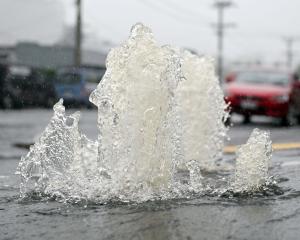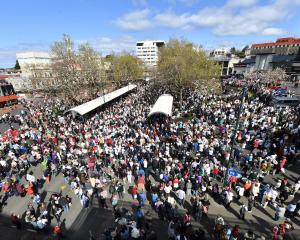
It marks the official opening of the newly rebuilt Hillside Railway Workshops.
Hillside has been the iconic beating heart of South Dunedin, employing generations of workers and supporting the local economy.
The engineering history of this site goes back to 1875.
It was taken over by the New Zealand Railways Department in 1901, which built and serviced locomotives and wagons there over ensuing decades.
In its heyday in the late 1940s, it employed 1200 workers.
In 2012, the then National government closed the engineering part of the business and sold the foundry to an Australian firm.
The impact on South Dunedin, both financially and indeed, culturally, was significant.
The age of cheap, imported wagons from offshore had arrived and New Zealand workers were the sacrificial lambs.
Somewhat predictably, the imported versions, while cheaper, turned out to be of inferior quality.
A classic case of being "penny-wise and pound-foolish".
The cavalry did eventually come in the form of New Zealand First and Regional Development Minister Shane Jones, courtesy of the Provincial Growth Fund (PGF).
The $3 billion PGF was designed to revitalise the regions and create employment — $20 million was allocated from the PGF in 2019 to de-risk the further $85m invested by Kiwirail.
I have had the privilege of a sneak peek through what is a magnificent, modern, fit-for-purpose facility.
It is complemented beautifully by the refurbishment of the old 1875 building, which is a nod to the proud history of Hillside.
It is heartwarming to see 100 heavy engineering jobs returning to the site assembling wagons and doing maintenance on locomotives.
It will be a true asset to the city for generations to come.
Other heavy engineering projects were also funded in Dunedin and Southland, with a view to restoring the manufacturing sector in the South and providing highly skilled, well-paying jobs.
It is great to come back to politics these few years later and see the impact of those investments coming to fruition.
We may not always be able to compete on mass production, but in niche manufacturing we have a great reputation for quality and innovation.
These projects mirror the successes of other PGF investments bearing fruit (and jobs) the length and breadth of the country.
This ongoing regional development funding is acting as the catalyst to bring in outside co-investment, often with iwi and the private sector leveraging the opportunities.
In our 2023 Coalition agreement, New Zealand First was able to secure a further $1.2b for the Regional Infrastructure Fund (RIF).
This, too, will build opportunities, jobs and growth in the regions.
And when the regions thrive, New Zealand thrives.














